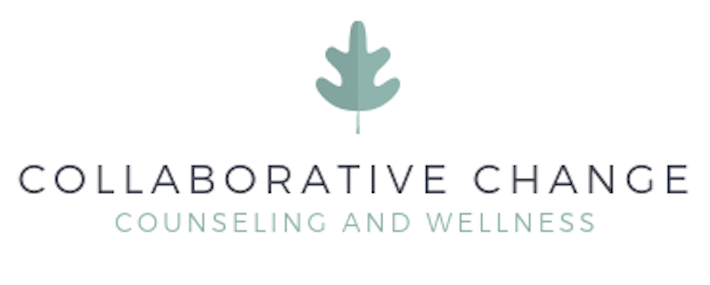It’s estimated that 7.2% of individuals in the United States identify as LGBTQ. There’s no denying that cultural perceptions surrounding people in this community have changed dramatically over the past two decades.
However, sometimes it can feel like for every step forward in LGBTQ rights we take two steps back. Discrimination and invalidation in the queer community lead to unique mental health problems.
For many individuals and families, the answer lies in LGBTQ affirming therapy. But what are the benefits of this form of therapy? And how do you get started? This guide will explore some of the answers to these questions so you can decide if it’s the right treatment for you.
What Is LGBTQ Affirming Therapy?
LGBTQ-affirming therapy is a form of therapy that seeks to validate and emphasize the experiences of people in the queer community. All too often in the counseling community, members of the LGBTQ community will encounter therapists who are ill-equipped to handle their unique challenges.
At best, well-meaning untrained therapists can give bad advice that’s tone-deaf to people in the queer community. At worst, they can actively judge the individuals for things they can’t change like their sexuality or gender expression.
So at its heart, LGBTQ-affirming therapy brings an inclusivity to therapy that respects all backgrounds and identities. However, they also bring strategies and models specifically geared towards helping LGBTQ individuals.
As such, providers that offer LGBTQ-affirming therapy are either a part of the community themselves, or they’ve been properly trained to address the unique challenges that queer people often face.
Why Is LGBTQ Affirming Therapy Important?
People in the LGBTQ community face unique challenges in their communities including trauma, discrimination, minority stress, and lack of family acceptance. On top of these external problems, there’s also the internal challenge of dealing with the complex dimensions found within the queer sense of identity.
Many people struggle with self-acceptance and self-esteem challenges. Both of these factors are what lead to an abnormally high percentage of mental illness in the LGBTQ community.
It shouldn’t come as a surprise that suicide rates, particularly in the trans community, can be extremely high. And the health problems aren’t just psychological. As this study notes, the stressors unique to the LGBTQ community can also cause things like:
- Poor cardiovascular health
- Higher BMI levels
- Increased likelihood of smoking cigarettes, alcohol use, and drug use
LGBTQ-affirming therapy provides a safe space for queer individuals to navigate the complexities inherent in their identities.
It also gives them healthy coping tools and strategies for combating the mental health issues that often plague the community.
What Are the Benefits of LGBTQ-Affirming Therapy?
The benefits of things like LGBTQ centered CBT (cognitive behavioral therapy) are well established. CBT provides individuals with the ability to restructure destructive thought patterns.
Often it’s enough on its own to provide significant relief to mental health issues like depression, anxiety, and PTSD. This is especially true when combined with proper medication.
In addition to these mental health diagnoses, LGBTQ individuals can face a variety of stressors in their lives, from discrimination to family acceptance. Affirming therapy can be successful at fostering coping mechanisms to combat these stressors.
Lastly, this type of therapy provides a judgment-free, accepting space to explore problems that are often unique to queer people. This can include things like gender dysphoria, workplace harassment, and increased instances of poverty. Oftentimes, members of the LGBTQ community aren’t seeking care specifically for problems related to gender and sexuality. Rather, they just want to know that they aren’t being judged by their provider. Affirming therapy can provide this type of safe space.
How It Can Help Families
LGBTQ-affirming therapy doesn’t just benefit queer individuals, it can also help their families. As we mentioned, many families struggle to accept gay members of their family when they disclose their identity.
Family therapy sessions with an affirming therapist can help parents and siblings address possible misconceptions or biases that might be hindering their relationship with their family.
Of course, the family members need to be open to attending therapy, which can sometimes be a challenge. However, if they consent it can strengthen families and help them overcome acceptance barriers. It can also help LGBTQ spouses work through relationship difficulties.
How Do You Find the Right Counseling?
There are multiple ways that you can find LGBTQ-affirming therapy. Perhaps one of the best ways is to consult with your community. Odds are one of your friends might have a suggestion for a qualified LGBTQ-affirming therapist who works for them.
If your network doesn’t turn up anything, turn to a Google search of providers in your area. First, make sure that they cater to LGBTQ individuals. Second, make sure they provide people with evidence-based therapies (EBTs).
While EBTs don’t always imply the provider is LGBTQ-friendly, it typically is the case. Once you have a provider or two, contact the office. Ask what they do to cater to LGBTQ individuals and listen carefully to their answers.
This should give you a better idea of their experience and what they do to cater to queer individuals. Lastly, schedule an initial consultation. A counselor can be perfect on paper. But then when you get into a session it just doesn’t feel right.
You want your LGBTQ therapy to be a safe, non-judgmental space. So if at any point you don’t feel safe, look for a different option. We also recommend checking out this resource for LGBTQ individuals looking for a therapist.
Need Help? Contact Collaborative Change Counseling and Wellness
We hope this guide helped you learn more about LGBTQ-affirming therapy. When looking for LGBTQ counseling there are two things you should prioritize. First, you want to make sure that they’re using evidence-based treatments.
Second, you need to make sure that it’s a safe space for discussing these unique problems. Here at Collaborative Change Counseling and Wellness, we pride ourselves on checking both of these boxes.
So if you’re ready to take a step towards change and receive support, schedule your appointment with us today.


